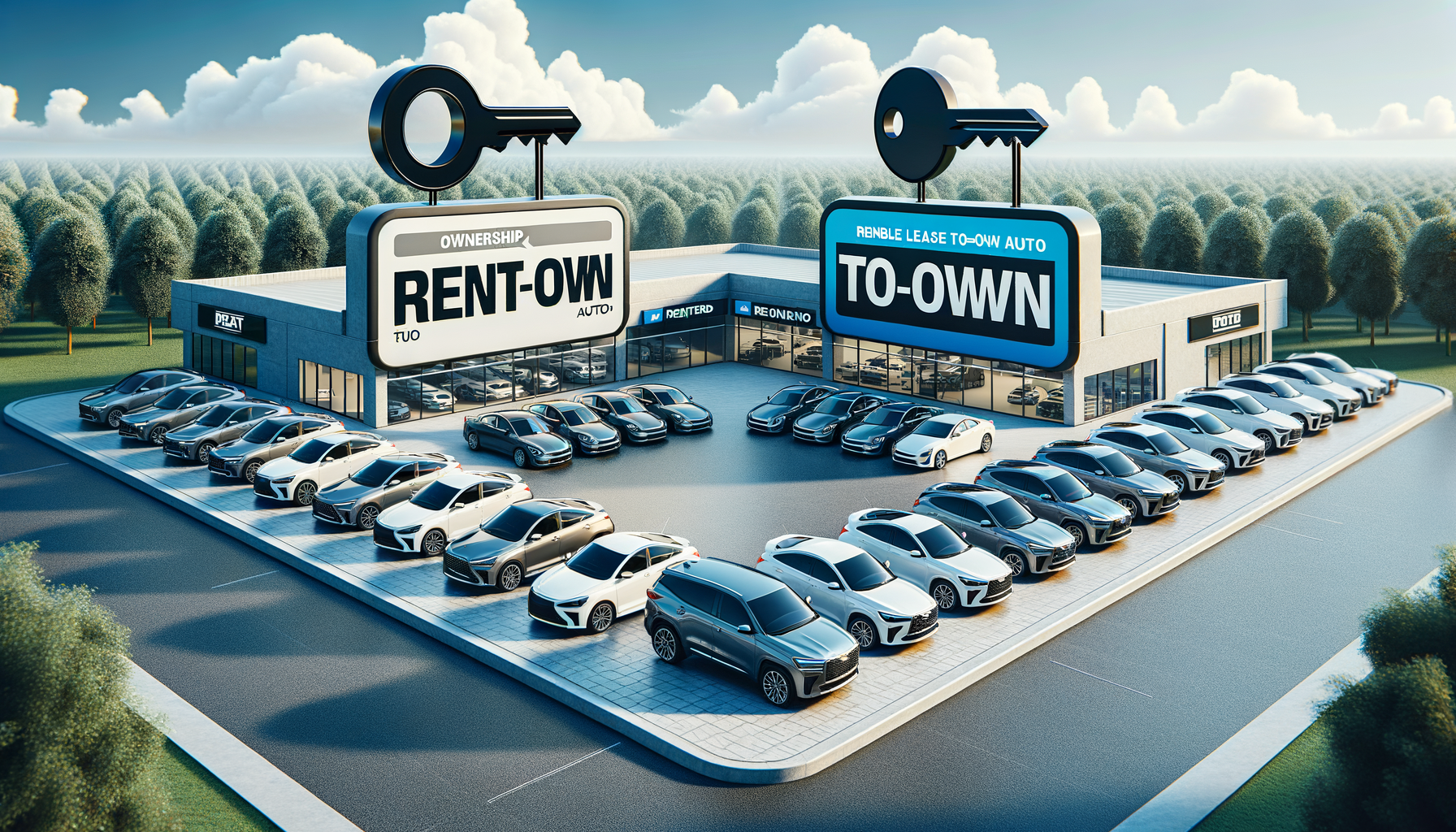Rent-to-Own Vehicles: A Convenient Alternative for Car Ownership
Envision this: you’re in need of a vehicle, but your credit score isn’t up to par, or perhaps the thought of a traditional auto loan feels overwhelming. That’s where rent-to-own vehicles can provide a solution! These are cars you can lease with the option to purchase at the end of the term. It’s similar to renting a car, but with an added advantage – the potential to own it! With regular weekly or monthly payments, the car can eventually be yours, bypassing the need for a hefty down payment or a credit check.

Understanding the Rent-to-Own Model
The rent-to-own model offers an innovative approach to vehicle ownership, especially for individuals who face challenges with traditional financing methods. Unlike conventional car loans, rent-to-own agreements allow customers to lease a vehicle with the option to purchase it at the end of the term. This model is particularly appealing to those with poor credit scores, as it typically does not require a credit check.
How does it work? Essentially, you enter into an agreement with a dealership or rent-to-own company, making regular payments over a specified period. These payments are often weekly or monthly and contribute towards the eventual purchase of the vehicle. At the end of the term, you have the option to buy the car outright, often at a previously agreed-upon price.
Key features of the rent-to-own model include:
- No credit check required, making it accessible for those with bad credit.
- Flexible payment plans that can be tailored to fit your budget.
- The possibility to own the car after the lease period.
This model provides a pathway to vehicle ownership for many who might otherwise be excluded from the market, offering both flexibility and a chance to build credit over time.
Advantages of Rent-to-Own Vehicles
The rent-to-own vehicle option comes with several advantages that make it an attractive alternative to traditional car financing. One of the primary benefits is accessibility. For individuals with a poor credit history, securing a traditional auto loan can be daunting, if not impossible. Rent-to-own eliminates this barrier, allowing anyone to drive away in a car without the need for a credit check.
Another advantage is the flexibility in payment structures. Unlike conventional loans that require a significant down payment, rent-to-own agreements usually have minimal upfront costs. This makes it easier for individuals to manage their finances and avoid the strain of a large initial outlay.
Additionally, rent-to-own arrangements can offer a way to improve one’s credit score. By making consistent, on-time payments, individuals can demonstrate financial responsibility, potentially improving their credit over time.
Overall, the rent-to-own model provides a unique blend of flexibility, accessibility, and financial growth potential, making it a viable option for many prospective car owners.
Potential Drawbacks to Consider
While rent-to-own vehicles offer numerous benefits, it’s essential to be aware of potential drawbacks before committing to this type of agreement. One concern is the overall cost. Rent-to-own agreements can sometimes be more expensive than traditional financing in the long run, as the payments are typically higher to account for the lack of a down payment and credit check.
Another consideration is the risk of losing the vehicle. If you fail to make payments on time, the dealership or rent-to-own company may repossess the car, leaving you without transportation and potentially damaging your financial standing.
It’s also important to thoroughly review the terms of the agreement. Some contracts may include hidden fees or stipulations that could affect your ability to purchase the vehicle at the end of the lease term. Ensuring you understand all aspects of the contract is crucial to avoid any unpleasant surprises.
Despite these potential drawbacks, many find the rent-to-own model to be a suitable solution, especially when traditional financing options are not available.
Comparing Rent-to-Own with Traditional Financing
When deciding between rent-to-own and traditional financing, it’s crucial to understand the differences and how each option aligns with your financial situation and goals. Traditional financing typically involves securing a loan from a bank or financial institution, which requires a credit check and a down payment. In contrast, rent-to-own bypasses these requirements, offering more accessibility to those with less-than-perfect credit.
In terms of cost, traditional financing often proves to be more economical in the long run, provided you qualify for favorable interest rates. Rent-to-own agreements might have higher monthly payments, reflecting the added risk taken on by the dealership or provider.
Another key difference lies in ownership. With traditional financing, you own the vehicle once the loan is paid off. In a rent-to-own arrangement, ownership is only transferred once all payments are made and the option to purchase is exercised.
Ultimately, the choice between rent-to-own and traditional financing depends on your current financial standing, credit history, and long-term goals. Each option has its merits and can serve different needs effectively.
Is Rent-to-Own Right for You?
Determining whether the rent-to-own vehicle option is suitable for you involves careful consideration of your financial situation, needs, and future plans. If you have a poor credit score or lack the funds for a significant down payment, rent-to-own might be an ideal solution, providing a path to vehicle ownership without the traditional barriers.
However, it’s essential to weigh the potential long-term costs and ensure that the payment structure aligns with your budget. Consider your ability to make consistent payments and review the terms of the agreement thoroughly to avoid any unexpected issues.
Rent-to-own can be an excellent stepping stone for those looking to rebuild their credit or gain access to a vehicle when traditional financing is not an option. By understanding the intricacies of this model and evaluating your personal circumstances, you can make an informed decision that best suits your needs.